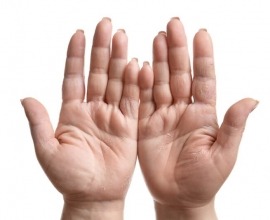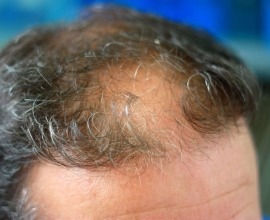3 Common Types of Hair Loss
Alopecia, more commonly known as hair loss, is a medical condition that disrupts and reduces the production of hair follicles on the body. The most common area for alopecia is the scalp, which on average can hold around 100,000 hairs that goes through a continuous cycle of growing, resting, falling out, and regenerating.
An individual’s hair cycle and growth can be affected by a wide range of factors including genetics, age, sex, medical behaviors, and behavioral conditions. Alopecia can be defined and categorized into different types depending on these factors.
Androgenic Alopecia
Typically referred to as male or female pattern baldness, androgenic alopecia is the most common type of hair loss that affects men and women around the world. In men, this type of hair loss is triggered by the hair follicle’s sensitivity to a by-product of testosterone called dihydrotestosterone or DHT, which affect the hair’s natural health cycle. Male pattern baldness is usually distinctive in that hair starts receding from the temples into an “M” type shape on the head.

In females, female pattern baldness is usually a result of natural aging but it can also be caused by an underlying endocrine condition or a hormone secreting tumor. However, unlike men, when women experience this type of hair loss, their hair thins out all over the head instead of targeting specific areas of the scalp.
Alopecia Areata
This type of hair loss is trigger by an autoimmune condition that attacks healthy tissues including hair follicles and causes hair to fall out but not regenerate. Alopecia areata can affect adults and children and the onset of this condition can start without prior warning. People who experience this condition usually see hair from the scalp fall out in small patches and the condition can extend to the eyebrows and eyelashes though there is no pain when the hair falls out.
Traction Alopecia
This type of hair loss differs from androgenic alopecia and alopecia areata in that it is a condition that is preventable and not trigger by genetic or immune conditions. Traction alopecia is a result of tight hairstyles that put strain on an individual’s hair follicles by pulling them out, which can eventually lead to damaging and destroying them.

People who wear their hair in braids, dreadlocks or tight ponytails are more likely to experience this condition along with people who constantly wear tight headgear such as bicycle helmets and people who subject their hair to styles and treatments such as hair extensions and chemical relaxers. It is important to note that traction alopecia can occur in any area of the body where hair follicles are subjected to strain and constant pulling – this can include the eyebrow and beard areas.
In conclusion, people around the world experience hair loss due to factors such as genetics, medical conditions or lifestyle choices; and depending on the type of hair loss they have, it may or may not be preventable.
Sources:
[1] ‘Types of Hair Loss’, in NYU Langone Health, viewed on September 30, 2020, https://nyulangone.org/conditions/hair-loss/types
[1] ibid
[1] ibid
[1] ‘Can I Stop Hair Loss?’, in keeps.com, viewed on September 30, 2020, https://www.keeps.com/learn/can-i-stop-hair-loss
[1] ‘Why Is Hair Loss More Common in Men Than Women?’, in Wimpole Clinic, viewed on September 30, 2020, https://wimpoleclinic.com/blog/why-is-hair-loss-more-common-in-men-than-women/
[1] op. cit, https://nyulangone.org/conditions/hair-loss/types
[1] Watson, Stephanie, medically reviewed by Taylor, Sarah, M.D., updated August 30th, 2018, viewed on September 30, 2020, https://www.healthline.com/health/womens-health/female-pattern-baldness
[1] op. cit, https://nyulangone.org/conditions/hair-loss/types
[1] ibid
[1] ibid
[1] ‘Traction Alopecia (hair loss), in Alopecia UK, viewed on September 30, 2020, https://www.alopecia.org.uk/traction-alopecia-hair-loss
[1] ibid
[1] ibid
[1] ibid














